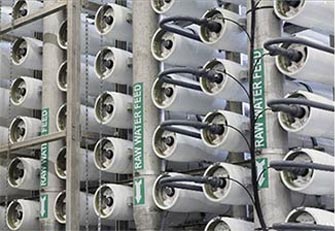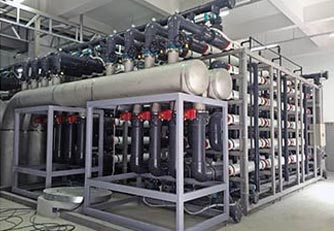Duraflow’s Tubular Membrane Application
Bulletin “RO Brine Recovery”


This bulletin describes the use of Duraflow Tubular Membranes for treating the wastewater brine which is created during the use of a reverse osmosis (RO) membrane desalination process. As the use of reverse osmosis has expanded and generated increasing volumes of salt free permeate at the same time it has generated very large volumes of highly concentrated brine solution that are being disposed of into the environment. The ratio of permeate flow to feed flow is called the % recovery and industry is driving technology to ever increase this percentage. Typically the volume to brine is 10 to 40 % by volume. This ratio is controlled by the presence of RO membrane fouling compounds. RO membrane feeds are limited by the high concentrations of hardness, silica, heavy metals, and BOD elements. The bulletin documents the challenges facing these industries as they attempt to increase % recovery. Removal of scale forming species is mandatory prior to increasing the percent recovery with secondary RO systems. The Duraflow ROBR process removes these contaminants (hardness, heavy metals, organics, silica, biological matter and detergents, if necessary) with targeted chemical treatment and separated with the Duraflow Tubular Membrane product. Using second stage RO equipment, overall system recoveries can be increased to 90 to 99% using the Duraflow process. The bulletin will explain how this is done.
Since every source water that is purified with RO membranes is different, the resulting brine water will be different. Duraflow has developed a standard procedure for approaching each RO customer location. This procedure uses water analysis, chemical process development to meet the customer's recovery objectives, the membrane microfiltration total system engineering design and detailed recommendations optimizing the performance of the second stage RO equipment needed to increase recovery.

